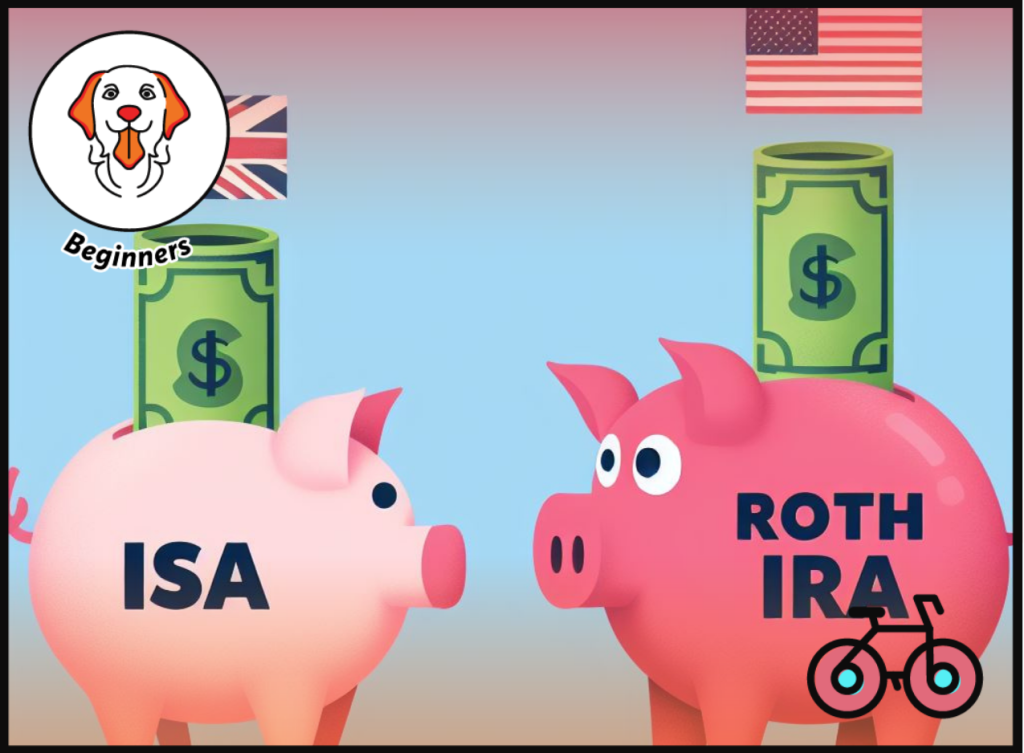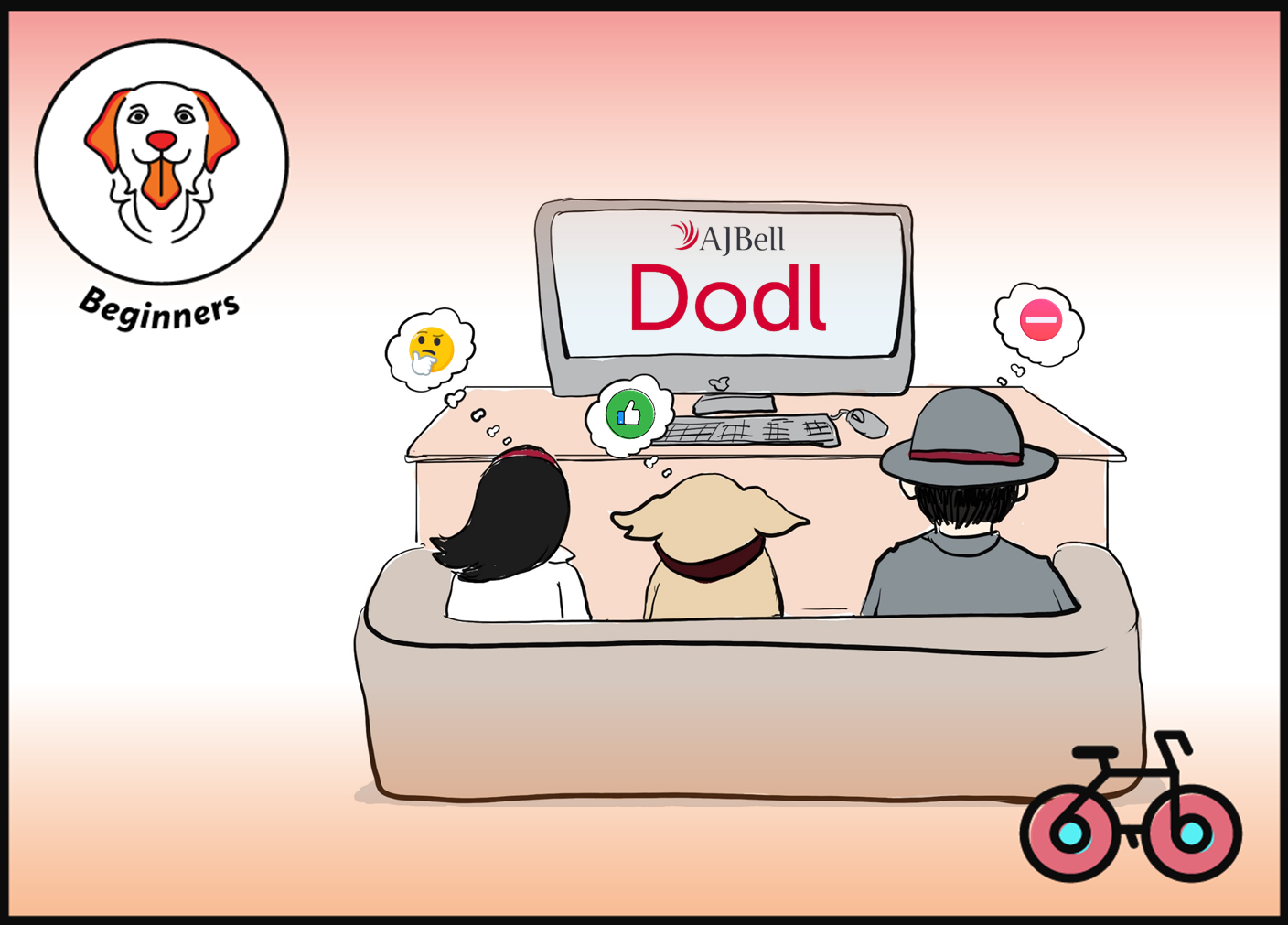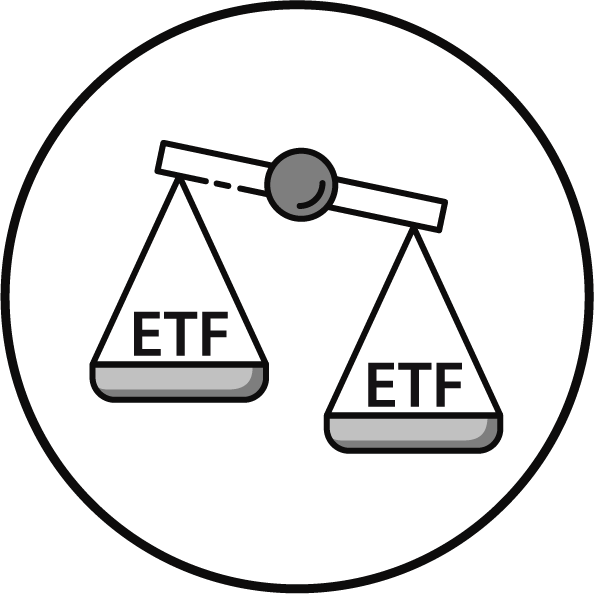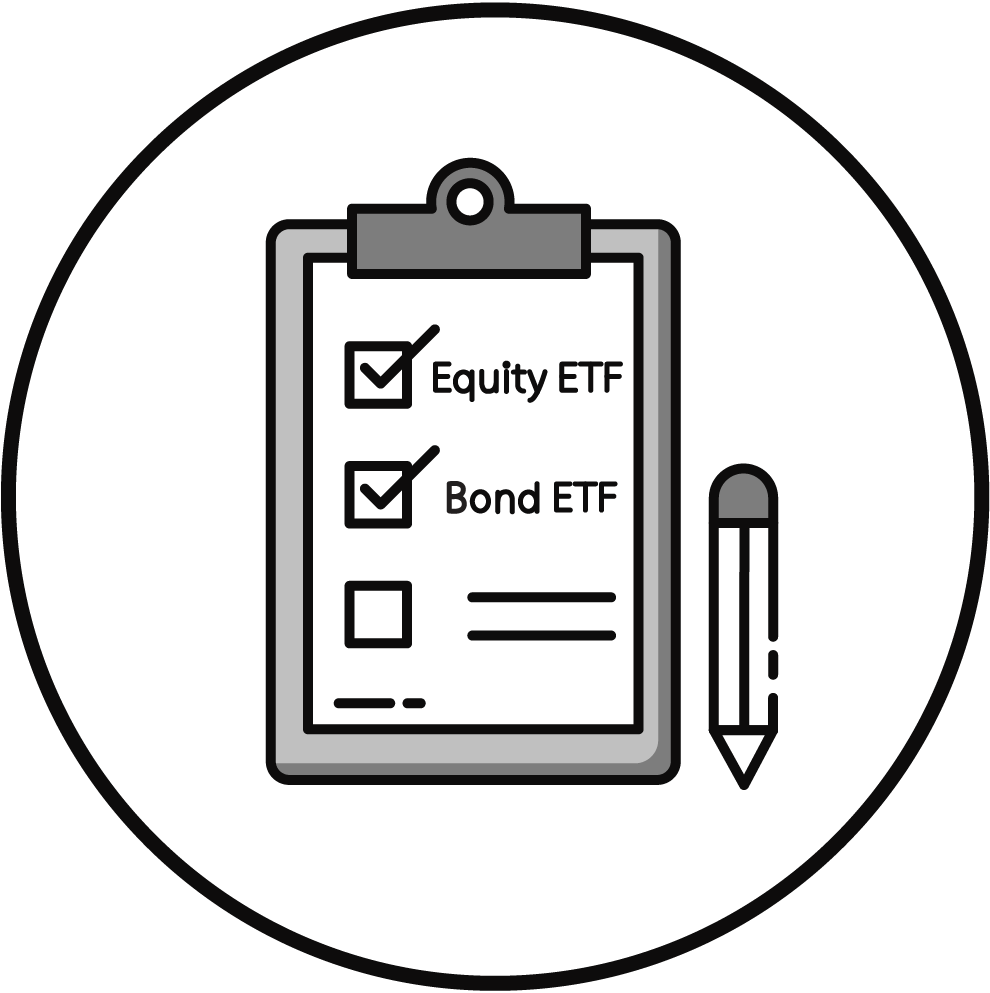Discover 2 Powerful Roth IRA Equivalents for UK Investors

UK’s Tax-Efficient Savings Alternatives to the U.S. Roth IRA
You’ve likely heard the buzz about the Roth IRA from US investing circles, tantalizing savers with its tax-free growth and withdrawal benefits.
While this famed investment vehicle is sadly out of reach for UK residents, fret not!
The UK financial landscape is brimming with robust alternatives. While the whims of the market are beyond your control, there are elements firmly within your grasp — including tax reduction.
Let’s dive into the different alternatives.
KEY TAKEAWAYS
- Roth IRA is not available in the UK: Roth IRA facilitates tax-efficient retirement savings, but is only available to US citizens.
- UK Equivalent: The Stocks and Shares Individual Savings Account (ISA) is the closest UK counterpart to the Roth IRA, offering similar tax-efficient investment benefits.
- Tax-free compounding – Both the Roth IRA, and the UK ISA permit tax-free investment growth in stocks, bonds, and more. Withdrawals from Stocks & Shares ISAs are tax-free.
- Higher Contribution Limits in the UK: Stocks & Shares ISA permits annual contributions up to £20,000 (for the 2023/2024 tax year), significantly higher than the Roth IRA’s $6,500 limit.
- Additional UK Options: UK residents have access to various others tax-efficient accounts, including Self-Invested Personal Pensions (SIPPs) for long-term retirement savings, Cash ISAs to park cash for the short term, Lifetime ISAs (LISAs) for first-time homebuyers, and Junior ISAs (JISAs) for children’s savings.
Here is the full analysis
ROTH IRA Equivalents
What is Roth IRA?
The Roth Individual Retirement Account (IRA) is a celebrated investment vehicle amongst US residents, designed to facilitate tax-efficient savings for retirement. With the ability to contribute up to $6,000 annually with after-tax dollars, it allows for tax-free growth and withdrawals, making it a popular choice for individuals at various income levels.
Can UK Investors Use Roth IRA?
No. Roth IRAs are exclusive to US taxpayers.
The UK doesn’t offer a precise equivalent to the US’s Roth IRA due to differences in the two countries’ tax systems.
However, there are two alternative investment accounts in the UK with benefits and growth potential akin to those of a Roth IRA:
- Stocks & Shares ISA – The Stocks & Shares Individual Savings Account
- SIPP – The Self-Invested Personal Pension
Differences With Roth IRA
WHAT MAKES ROTH IRAs aND ISAs & SIPPs SIMILAR?
All are designed for return compounding
Both Roth IRAs, Stocks & Shares ISAs and SIPPs aim to maximize long-term returns through the power of compounding. They offer tax-free growth, allowing investments to accumulate and generate earnings over time without being diminished by taxes.
What MaKES THEM DIFFERENT?
Much higher contribution amounts
Roth IRAs, available only to US residents with income restrictions, allow for a maximum contribution of $6,000 (or $7,000 for those 50 or older) for tax-free investment in stocks, bonds, mutual funds, and ETFs, primarily suited for long-term retirement savings.
In contrast, UK residents can choose from ISAs and SIPPs:
- Stocks & Shares ISA – are accessible to residents aged 18 and over, permits up to £20,000 in annual contributions across all ISAs for tax-free investment in a broader array of assets, serving medium to long-term savings and investment goals.
- The Self-Invested Personal Pension (SIPP) – allows contributions of £40,000 or 100% of earnings (whichever is lower) with tax relief on contributions and a wide range of investment options, targeting long-term retirement savings with the first 25%, of withdrawals tax-free and the remainder taxed as income.
COMPARISON - ROTH IRA VS UK EQUIVALENTS
| Feature | Roth IRA | Stocks & Shares ISA | SIPP |
|---|---|---|---|
| Suitability | Long-term retirement savings | Medium and long-term savings and investments | Long-term retirement savings |
| Eligibility | US residents; income restrictions apply | UK residents aged 18 and over | UK residents; withdraw from age 55 (57 by 2028) |
| Contribution Limits (2023/2024) | $6,000 ($7,000 if age 50 or older) | £20,000 (across all ISAs) | £40,000 or 100% of earnings (whichever is lower) |
| Asset Types | Stocks, bonds, mutual funds, ETFs | Stocks, bonds, mutual funds, ETFs, investment trusts | Wide range, including stocks, bonds, funds, property |
| Tax Benefits | Tax-free growth and withdrawals | Tax-free growth and withdrawals | Tax-free growth and 25% tax-free withdrawal |
| Contribution tax relief | None | None | Tax relief on contributions |
| Withdrawal Rules | Tax-free after age 59.5; penalties for early withdrawal | Full flexibility - Tax-free at any time; no penalties | 25% tax-free; remaining taxed as income; penalties if early; |
| Minimum Investment | Varies by provider; often none | Typically none | Varies by provider |
UK TAX WRAPPERS - HOW TO CHOOSE?
ISA vs SIPP
Unrestricted Access vs Retirement Goals
Determining the most apt savings account hinges on your investment objectives.
Consider a Stocks and Shares ISA as your investment vehicle for tax-free withdrawals and unrestricted access to your funds. On the other hand, if your strategy involves long-term investment for retirement, with no need for early fund access, a SIPP (Self-Invested Personal Pension) aligns well with this goal.
COMPARISON - SIPP VS Stocks & Shares ISA
| Consideration | SIPP | ISA |
|---|---|---|
| Suitable For | Primarily for retirement savings. | Versatile; suitable for retirement, home purchase, or general savings. |
| Eligibility & Access | Accessible from age 55 (57 by 2028). | Available to individuals 18 and over with no age restriction for access. |
| Contribution Limits | £40,000 or 100% of earnings (whichever is lower) per year. | £20,000 per year across all ISAs. |
| Tax Benefits | Tax relief on contributions; 25% of withdrawal is tax-free, the rest is taxed as income. | Contributions from taxed income; growth and withdrawals are tax-free. |
| Employer Contributions | Can receive employer contributions. | Do not receive employer contributions. |
| Investment Options | Broad range of assets, possibly including direct property investment. | Wide range of investment options. |
| Withdrawal Rules | Penalties for early withdrawal apply. | Can be withdrawn at any time without penalty. |
| Inheritance Tax Planning | Favorable; can be passed to any beneficiary. | Advantageous if passed to a spouse. |
Why Having both may make sense
Both SIPPs and ISAs are subject to changes in government policies and tax laws that can impact their benefits and rules. Often, investors use SIPPs and ISAs in combination as part of a diversified portfolio to hedge against various tax risks and to achieve different financial objectives.
ISA ACCOUNTS FOR TAX YEAR 2023/24
While the closest equivalent to Roth IRA is the Shares & Stocks ISA, UK Investors can choose other ISAs that have a similar objective of tax-free long term return compounding.
What are the main types?
The key types are:
- Cash ISA: A good option for individuals who want a risk-free way to save money while still earning interest.
- Stocks & Shares ISA: Ideal for individuals comfortable with taking some level of risk to earn higher returns over the long term potentially. Provides the opportunity for capital growth and income through a diverse range of investments.
- Lifetime ISA (LISA): Suitable for young individuals saving for their first home or retirement, with the benefit of government bonuses to boost savings. The government bonus of 25% on contributions is a significant incentive.
- Junior ISA (JISA): Designed for long-term savings for children, providing a tax-free way to build a nest egg for their future. Funds are accessible to the child when they turn 18.
Main four ISA TYPES
| ISA Type | Eligibility | Contribution Limits (2023/2024) | Asset Types | Government Support | Suitability |
|---|---|---|---|---|---|
| Cash ISA | UK residents aged 16 and over | £20,000 (across all ISAs) | Cash | None | Short-term savings, low risk tolerance |
| Stocks & Shares ISA | UK residents aged 18 and over | £20,000 (across all ISAs) | Stocks, bonds, mutual funds, ETFs | None | Medium to long-term investment goals, higher risk tolerance |
| Lifetime ISA (LISA) | UK residents aged 18 to 39 | £4,000 | Cash or stocks and shares | 25% bonus on contributions, up to £1,000 per year | First-time homebuyers or retirement savings |
| Junior ISA (JISA) | Under 18s (opened by parent/guardian) | £9,000 | Cash or stocks and shares | None | Long-term savings for children's future |
What are the limits?
The £20,000 limit is the total amount that an individual can contribute across all of their ISA accounts in a single tax year. Here’s how it works:
- Combined Limit: The £20,000 limit is a combined total that applies to Cash ISAs, Stocks & Shares ISAs, and Innovative Finance ISAs. You can distribute your contributions among these ISAs as you wish, but the total contribution to these accounts combined cannot exceed £20,000 in a tax year.
- Lifetime ISA (LISA): The LISA has its own separate limit of £4,000 per tax year. However, contributions to a LISA also count towards the overall £20,000 ISA limit. For example, if you contribute £4,000 to a LISA, you can still contribute up to £16,000 across your other ISAs (Cash, Stocks & Shares, Innovative Finance) in the same tax year.
- Junior ISA (JISA): JISAs have a separate limit of £9,000 per tax year, and contributions to a JISA do not affect the £20,000 combined limit for adult ISAs.
For example, if you contribute £4,000 to a LISA and £3,000 to a JISA (for your child), you can still contribute up to £16,000 to your Cash ISA, Stocks & Shares ISA, or a combination of both, without exceeding the respective limits for each account type in the 2023/2024 tax year.
Who is eligible?
Cash ISA & Stocks & Shares ISA:
- Both Cash and Stocks & Shares ISAs are available to UK residents.
- Individuals must be aged 16 and over for Cash ISAs, and 18 and over for Stocks & Shares ISAs.
- There isn’t an income requirement, and you can open one of each type of ISA each tax year.
Lifetime ISA (LISA):
- Available to UK residents aged between 18 and 39.
- You must be under 40 when you open the LISA.
- Once opened, you can contribute to your LISA until you are 50.
Junior ISA (JISA):
- Available for children under the age of 18 who live in the UK.
- Must be opened by a parent or legal guardian, but anyone can contribute.
- The child can take control of the account at age 16, but funds are not accessible until they turn 18.
For example, if an individual is 35 years old, they can open and contribute to a Cash ISA, Stocks & Shares ISA, and a LISA. If they also have children under 18, they can open and contribute to JISAs on behalf of their children.
SIPP RULES FOR TAX YEAR 2023/24
A Self-Invested Personal Pension (SIPP) is a retirement-saving account offering tax-free growth, with a notable feature of a 20% government tax boost. Withdrawals can begin at age 55 (rising to 57 by 2028), which is earlier than the Roth IRA’s age requirement of 59.5. This change allows access to SIPP funds ten years prior to the legal retirement age.
However, SIPPs demand a proactive approach as they don’t offer managed portfolios, requiring individuals to select stocks and bonds aligned with their risk tolerance. While the initial 25% of withdrawals are tax-free, subsequent amounts are subject to income tax.
To promote retirement savings, the UK government provides tax relief on SIPPs, with basic relief applied automatically and higher-rate relief claimable via self-assessment tax returns. With an Annual Allowance set at £40,000 or 100% of your income (whichever is lower) for the 2023/2024 tax year, SIPPs offer a conducive framework for accumulating pension funds. Additionally, any unused Annual Allowance can be carried forward for up to three years, maximizing your tax-efficient savings potential.
Good Luck and Keep’em* Rolling!
(* Wheels & Dividends)

Weekend Reading – BlackRock Launches New iBonds, Truth About €1M Broker Insurance & BOW is 4 years old!

The Truth About €1 Million Broker Guarantees

4 Things I Learned In 4 Years Of Running A Finance Blog

Dodl By AJ Bell Review – AJ Bell’s Younger Brother

Vanguard LifeStrategy Review – A Retriever In A Babushka Doll

Why Do Portfolio Managers Care About Factors? It’s Not What You Think.
HELP US
🙋 Wondering why finding honest Investing Guidance is so difficult? That’s because running an independent website like ours is very hard work. If You Found Value In Our Content And Wish To Support Our Mission To Help Others, Consider:
- 📞 setting up a coaching session
- ☕ Treating us to a coffee
- 🐶 Purchasing Our Official Merchandise
- ❤️ Exploring Other ways to support our growth, both financially and non-financially.
DISCLAIMER
All information found here, including any ideas, opinions, views, predictions expressed or implied herein, are for informational, entertainment or educational purposes only and do not constitute financial advice. Consider the appropriateness of the information having regard to your objectives, financial situation and needs, and seek professional advice where appropriate. Read our full terms and conditions.

















